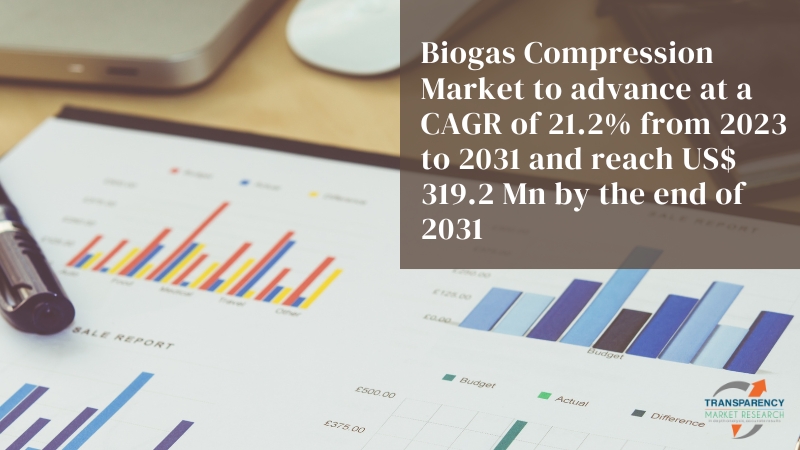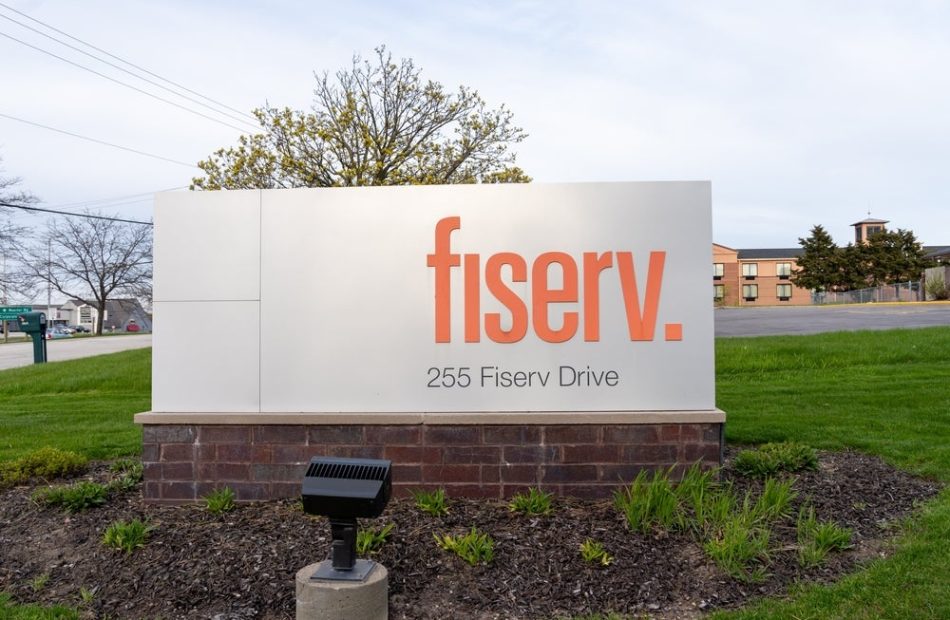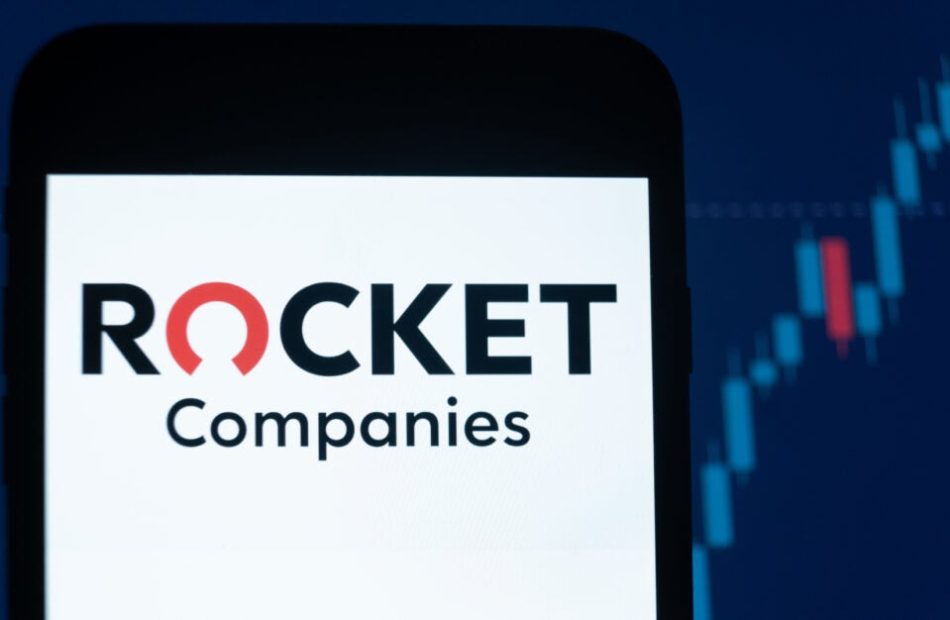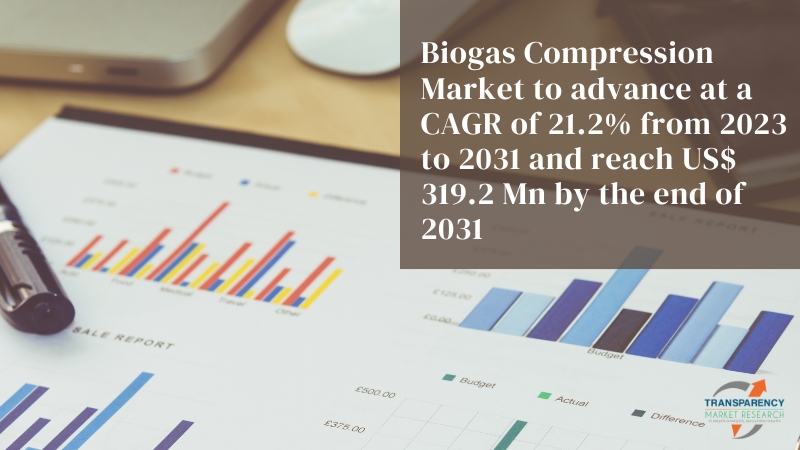The Smartest Dividend Stocks to Buy With $1,000 Right Now
Dividends are the unsung heroes when it comes to making money and building wealth in the stock market. They may not be as sexy or draw the attention that high-flying growth stocks do, but they can be just as rewarding, especially over time.
If you’re looking for dividend stocks to add to your portfolio, you might want to consider the following two companies. Each has a high dividend yield and each is a leader in industries that are likely to be around for the long haul. Investing $500 into each could net you about $65 in annual income at their current yields.
Tobacco giant Altria Group (NYSE: MO) has been one of the highest-yielding dividend stocks in the S&P 500 for quite a while. Its quarterly dividend is $1.02 per share and it offers a forward yield of over 8%. For perspective, the average dividend yield of the S&P 500 stands just above 1.3%.
When Altria announced a dividend increase in August, it marked the 55th straight year the company has raised its payout. It is one of only 54 companies on the stock market that has reached the Dividend King status, putting it in elite company when considering the thousands of companies on U.S. stock exchanges.
It’s one thing to have an attractive dividend. But it’s even more impressive when you manage to keep increasing an attractive dividend, which Altria has done — almost doubling it in the past decade.
Altria has maintained a stronghold in the cigarette industry for a while. Smoking rates have been steadily declining in the U.S., affecting volume, but the pricing power that it can exert has allowed it to offset this decline and keep its financials healthy.
The company has to find viable smoke-free options to maintain its leadership position in the long term. It failed with its $12.8 billion Juul investment (putting it lightly), but its recent vaping venture, NJOY, has been making positive strides. In the second quarter, NJOY consumables shipment volumes increased by 14.7% to 12.5 million units, and NJOY devices’ shipment volume jumped by 80% to 1.8 million units. This brought the totals to 23.4 million and 2.8 million, respectively, in the first half of 2024.
Cigarettes will be the mainstay of Altria’s business for the foreseeable future. However, it’s encouraging to see it making the investments needed for long-term success. In the meantime, investors can enjoy the company’s lucrative dividend, which should continue increasing for several years to come.
AT&T (NYSE: T) is getting accolades from investors for its improved financial picture after some turbulent years caused by a misguided decision to get involved in the media and entertainment industry. The company took its lumps, sold off its underperforming assets, and returned to its telecom roots, and the results have been paying off. The stock is up over 26% this year (as of Oct. 21), marking its best stretch in a while.
Market 'Very Convinced' Of A Trump Win, Says Stanley Druckenmiller: Why Billionaire Investor Thinks Blue Sweep Is 'Highly Unlikely'
While opinion polls predict a close race between Democratic nominee Kamala Harris and Republican nominee Donald Trump, billionaire investor and former hedge fund manager Stanley Druckenmiller, the chairman and CEO of Duquesne Family Office, on Thursday weighed in with his thoughts on the 2024 presidential election.
Don’t Miss:
What Markets Say: While stating that things are still fluid, Druckenmiller said he liked the market indicators for the elections. In an interview with Bloomberg, the billionaire said in 1980, the market was right on former President Ronald Reagan despite what the pundits said.
“And I must say in the last 12 days, the market and the inside of the market is very convinced Trump is going to win. You can see it in the bank stocks, you can see it in crypto, you can even see it in Trump Media & Technology Group Corp. (NYSE:DJT), his social media company,” he said.
Industries that benefit from deregulation will benefit from a Trump victory and outperform others, Druckenmiller said.
Trump is the favorite to win the election now, the billionaire said, adding that the polls do not mean much nowadays as no one even responds to them anymore.
See Also: Warren Buffett once said, “If you don’t find a way to make money while you sleep, you will work until you die.” These high-yield real estate notes that pay 7.5% – 9% make earning passive income easier than ever.
The Scenarios: Druckenmiller weighed in four scenarios, namely a blue sweep, a red sweep, the Trump administration with a blue branch of Congress, and a Harris administration with a red branch of Congress.
A blue sweep is extremely unlikely, the billionaire said, adding that even if Harris wins the presidency looking at state-by-state polls, it looks like the Republicans are going to win the Senate.
Where you got a blue sweep, you would have a rough time for equities for three to six months, Druckenmiller said. This will translate into the economy because equity ownership is 25% of financial assets, an all-time high, he added.
“So that’s a blue sweep. But the good news or the bad news, depending on how you view life is, I think it’s highly unlikely,” the ex-hedge fund manager said.
A red sweep is probably more likely than a Trump presidency with a blue Congress, he said. This is because anybody who votes for Trump is probably not going to switch their allegiance, he added.
Fiserv Earnings Enjoy 24% Boost, Raises 2024 Outlook On Heels Of DoorDash Partnership
Fiserv, Inc FI reported fiscal third-quarter results, with revenue increasing by 7% year-over-year to $5.22 billion, beating the analyst consensus estimate of $4.91 billion. Adjusted revenue increased 7% year-over-year to $4.88 billion.
The financial technology and services provider’s adjusted EPS of $2.30 beat the analyst consensus estimate of $2.26.
Also Read: Apple Pay Expands Buy Now, Pay Later With Affirm, Adds Support For Third-Party Browsers And More
The adjusted EPS marked a 17% increase over last year’s period. The stock price slid after the print.
Organic revenue grew 15%, led by 24% growth in Merchant Solutions and 6% in Financial Solutions.
The adjusted operating margin increased by 170 bps Y/Y to 40.2%. Adjusted operating margin increased 290 basis points Y/Y to 37.7% in the Merchant Solutions segment and by 40 bps Y/Y to 47.4% in the Financial Solutions segment.
“We are pleased with our third quarter performance, which showcases strength across both our Merchant and Financial Solutions segments and several significant new wins,” Chair and CEO Frank Bisignano said.
FY24 Outlook: Fiserv raised organic revenue growth outlook to 16%-17% (prior 15%-17%) and raised adjusted EPS outlook to $8.73-$8.80 (prior $8.65 – $8.80), representing growth of 16%-17% Y/Y versus the $8.75 consensus.
Fiserv announced a partnership with DoorDash Inc DASH to integrate financial services into the online delivery platform.
Through this partnership, DoorDash is leveraging Fiserv’s expertise in merchant acquiring, account processing, and card issuing to streamline financial services for Dashers. Starion Bank, a long-standing Fiserv client, will act as the Sponsor Bank for the Crimson accounts.
Fiserv stock gained 80% in the last 12 months.
Price Action: FI stock is down 0.85% at $195.50 premarket at the last check on Tuesday.
Also Read:
Image: Shutterstock
Market News and Data brought to you by Benzinga APIs
© 2024 Benzinga.com. Benzinga does not provide investment advice. All rights reserved.
DOJ Sues Rocket Mortgage, Appraisal Companies For Alleged Racial Discrimination — Rocket Responds: 'Massive Overreach'
The U.S. Department of Justice (DOJ) announced Monday afternoon that it’s going after a group of companies for alleged racial discrimination in mortgage refinancing applications.
What To Know: The DOJ filed a lawsuit against Rocket Companies Inc.’s RKT Rocket Mortgage; as well as Solidifi US; Maverick Appraisal Group and Maverick CEO Maksym Mykhailyna, alleging that the parties discriminated against a Black homeowner by “undervaluing her home based on her race” in an appraisal that takes place when a homeowner files to refinance their mortgage.
The DOJ also alleged Rocket Mortgage further interfered with the homeowner’s rights by canceling her mortgage refinance application after she reported the discrimination.
Benzinga reached out to Rocket Companies, Solidifi US and Mykhailyna’s company Maverick Appraisal Group for comment on the allegations.
Rocket Mortgage issued the following statement to Benzinga in response to the DOJ’s lawsuit:
“Under federal law, mortgage lenders are required to work at arm’s length during the appraisal process, partnering with independent appraisal management companies who assign the work to state-licensed professional appraisers. The law’s intent is to determine the home’s value without any input or bias from the lender or any other party with interest in the transaction,” the company said.
“It is clear the government isn’t interested in their own rules, or facts, and are simply including us in this case to score headlines based on our strong brand and prominent position in the industry. We look forward to exposing the government’s massive overreach in this matter.”
According to the DOJ, the homeowner applied for a mortgage refinancing loan from Rocket Mortgage in early 2021. Rocket Mortgage contracted Solidifi to appraise the home and Solidifi retained Mykhailyna and his company for the appraisal.
The home was located in a predominantly white neighborhood in Denver, but the complaint alleged Mykhailyna used sales data from neighborhoods that were further away and had larger Black populations. Mykhailyna also allegedly used homes in the same neighborhood to support an appraisal for a white homeowner in the same neighborhood a few months earlier.
“The complaint alleges that these and other errors demonstrate Mykhailyna undervalued the property because of race and color,” the press release states.
Mykhailyna sent his appraisal to Solidifi, which reviewed the appraisal and forwarded it to Rocket Mortgage. When Rocket Mortgage presented it to the homeowner, she contacted the company and explained why she believed there was racial discrimination involved. The DOJ claimed Rocket Mortgage canceled her refinance application in response.
The homeowner then filed a complaint with the Department of Housing and Urban Development (HUD), which conducted an investigation before referring the matter to the DOJ.
“HUD applauds today’s action and remains committed to working with DOJ to ensure appraisal companies and mortgage providers are held accountable when they violate our nation’s fair housing laws,” said principal deputy assistant secretary Diane Shelley of HUD’s Office of Fair Housing and Equal Opportunity.
“It has been over 56 years since the passage of the Fair Housing Act, and it is unconscionable that Black and Brown families still face discrimination during housing transactions.”
Rocket Companies shares closed Monday down 9.33% at $16.33, according to pricing data from Benzinga Pro.
Photo: Shutterstock.
Market News and Data brought to you by Benzinga APIs
© 2024 Benzinga.com. Benzinga does not provide investment advice. All rights reserved.
$150,000 Now or $1,200 a Month: Is a Lump Sum or Annuity Payment Better?
SmartAsset and Yahoo Finance LLC may earn commission or revenue through links in the content below.
When companies offer a pension, it’s common to give retirees two options: collect the pension as a lifetime monthly payment or receive it as a lump sum at retirement.
Monthly payments over time are the format that most people associate with pensions. However, a lump sum payment can, sometimes, be the better option. Depending on what your company offers and what kind of returns you can pursue, you might collect more from your money in the long run by taking it all up front.
For example, say that you’re an individual getting ready for retirement. Your employer has offered you either a $150,000 lump sum or $1,200 monthly payments for life. Here’s how to think about it.
To speak to a professional about your own retirement options, you can get matched with a fiduciary financial advisor for free.
Pensions are otherwise known as “defined benefit retirement plans.” This means that your employer commits to providing certain benefits in retirement. This is as opposed to “defined contribution retirement plans,” through which your employer commits to providing certain contributions during employment.
With a pension, your employer promises to provide monthly payments throughout your retirement. The exact amount can range widely, and is typically determined by factors that include your age, salary history, tenure with the company and seniority at retirement. This amount may be indexed to inflation or, like an annuity, it might be fixed.
It is the employer’s responsibility to keep the pension funded and solvent throughout eligible former employees’ lifetimes. To ensure that this system functions, pensions are backstopped by a federal agency which insures pensions up to a maximum amount.
Pensions are popular among workers and retirees because of their reliability. You don’t have to worry about balancing savings against costs of living. Nor do you need to manage complex, unpredictable and (if, you go it alone, very mixed) market returns. Instead, you can simply retire with an income.
For this same reason, however, pensions have become unpopular among employers. The same reliability that makes pensions valuable for retirees creates high and indefinite costs for companies. The expense of caring for a former workforce, quite simply, is very expensive.
As a result, among employers that do offer a pension, it’s common to offer “lump sum distributions.” With a lump sum distribution, the employee receives a single payout at retirement instead of monthly payments for life. This can turn an indefinite series of payments into one, scheduled expense, which is much more manageable for the employer.
Biogas Compression Market Set to Hit USD 319.2 million by 2031, with 21.2% CAGR: Analysis by Transparency Market Research, Inc.
Wilmington, Delaware, United States, Transparency Market Research Inc. -, Oct. 22, 2024 (GLOBE NEWSWIRE) — The global biogas compression market (바이오가스 압축 시장) is estimated to flourish at a CAGR of 21.2% from 2023 to 2031. Transparency Market Research projects that the overall sales revenue for biogas compression is estimated to reach US$ 319.2 million by the end of 2031.
Evolving financing models are playing a crucial role in market growth. Innovative financing mechanisms such as green bonds, crowd funding, and public-private partnerships are providing funding avenues for biogas projects, particularly in emerging economies where traditional financing may be limited.
Regulatory harmonization efforts are streamlining biogas project development across borders. Standardization of regulations and permitting processes facilitates cross-border investment and project deployment, fostering market expansion and global collaboration in the biogas compression sector.
Request a PDF Sample of this Report Now!
https://www.transparencymarketresearch.com/sample/sample.php?flag=S&rep_id=85452

Advancements in biogas upgrading technologies are enhancing the quality of biogas for injection into natural gas pipelines. This trend opens up new opportunities for biogas utilization in sectors such as transportation and heating, driving demand for biogas compression systems tailored for pipeline injection applications.
Key Findings of the Market Report
- Screw compressors lead the biogas compression market, offering efficient and reliable compression solutions tailored to the specific requirements of biogas applications.
- Biomethane emerges as the leading application segment in the biogas compression market, driven by its versatility and potential as a renewable fuel source.
- Europe emerges as the leading region in the biogas compression market, driven by robust regulatory support and significant investments in renewable energy infrastructure.
Biogas Compression Market Growth Drivers & Trends
- Increasing adoption of renewable energy sources, driven by government mandates and environmental concerns, boosts demand for biogas compression solutions.
- Continuous innovation in compression technology enhances efficiency and reliability, making biogas compression more viable and cost-effective.
- Growing emphasis on waste-to-energy solutions promotes biogas production, driving the need for efficient compression infrastructure.
- Biogas offers a decentralized energy source, reducing dependence on traditional fossil fuels and enhancing energy security in various sectors.
- Emerging applications of biogas, such as transportation fuel and power generation, open new avenues for market growth and diversification.
Global Biogas Compression Market: Regional Profile
- In North America, stringent environmental regulations and increasing focus on renewable energy solutions propel the demand for biogas compression technologies. The United States, in particular, witnesses significant investments in biogas infrastructure, driven by government incentives and growing awareness of sustainable energy practices.
- Europe stands as a frontrunner in the global biogas compression market, buoyed by ambitious renewable energy targets and robust regulatory support. Countries like Germany, Sweden, and the Netherlands lead in biogas production and utilization, fostering a thriving market ecosystem with a strong emphasis on technology development and deployment.
- Asia Pacific showcases immense growth potential in the biogas compression market, driven by rapid industrialization and urbanization. Countries such as China, India, and Japan are investing in biogas infrastructure to address energy security concerns and mitigate environmental pollution. Government initiatives promoting clean energy adoption further catalyze market expansion across the region.
Unlock Growth Potential in Your Industry! Download PDF Brochure: https://www.transparencymarketresearch.com/sample/sample.php?flag=S&rep_id=85452
Biogas Compression Market: Competitive Landscape
The biogas compression market features a competitive landscape marked by a blend of established players and emerging entrants striving to meet the rising demand for biogas compression solutions. Leading companies such as Atlas Copco, EnviTec Biogas, and Xebec Adsorption dominate with their extensive product portfolios and global presence.
Innovative startups like Greenlane Renewables and Unison Solutions are disrupting the market with cutting-edge technologies and tailored solutions. Strategic partnerships, mergers, and acquisitions are common strategies among key players to enhance market foothold and expand product offerings, intensifying competition and fostering innovation in the biogas compression sector. Some prominent players are as follows:
- Tetra Tech
- Aerzen
- Gardner Denver
- Biokomp Srl
- Hindustan Petroleum Corporation Limited,
- HAUG Sauer Kompressoren AG
- Bauer Compressors Inc.
- Enea Mattei S.p.A.
- Mehrer Compression GmbH
- Tecno Project Industriale Srl
- Avelair
- Fornovo Gas S.p.A.
- Chicago Pneumatic
- Swamatics
- DBS Engineering Services
Product Portfolio
- Tetra Tech offers comprehensive consulting, engineering, and technical services to address complex environmental, infrastructure, and natural resource challenges worldwide. With a focus on sustainability and innovation, Tetra Tech delivers tailored solutions to clients across various sectors, ensuring resilience and long-term success.
- Aerzen specializes in providing high-performance rotary lobe blowers, screw compressors, and gas meters for diverse industrial applications. With a commitment to innovation and reliability, Aerzen delivers energy-efficient solutions that meet the rigorous demands of customers worldwide, ensuring optimal performance and operational excellence.
- Gardner Denver offers a wide range of industrial equipment, including air compressors, blowers, and vacuum pumps, designed to enhance productivity and efficiency across various industries. With a legacy of engineering excellence and customer-focused solutions, Gardner Denver remains a trusted partner for reliable and innovative equipment solutions.
Biogas Compression Market: Key Segments
By Compressor Type
- Piston
- Screw
- Vane
- Liquid Ring
- Diaphragm
- Others
By Application
- Biomethane
- Transportation
- Combined Heat and Power
- Others
By Region
- North America
- Latin America
- Europe
- Asia Pacific
- Middle East & Africa
Buy this Premium Research Report: https://www.transparencymarketresearch.com/checkout.php?rep_id=85452<ype=S
More Trending Reports by Transparency Market Research –
Hydrogen Compressor Market (水素圧縮機市場) – The global hydrogen compressor market is projected to advance at a CAGR of 5.8% from 2023 to 2031
Geophysical Exploration Equipment Market (سوق معدات الاستكشاف الجيوفيزيائية) – The global geophysical exploration equipment market is projected to expand at a CAGR of 4.1% during the forecast period from 2023 to 2031
About Transparency Market Research
Transparency Market Research, a global market research company registered at Wilmington, Delaware, United States, provides custom research and consulting services. Our exclusive blend of quantitative forecasting and trends analysis provides forward-looking insights for thousands of decision makers. Our experienced team of Analysts, Researchers, and Consultants use proprietary data sources and various tools & techniques to gather and analyses information.
Our data repository is continuously updated and revised by a team of research experts, so that it always reflects the latest trends and information. With a broad research and analysis capability, Transparency Market Research employs rigorous primary and secondary research techniques in developing distinctive data sets and research material for business reports.
Contact:
Transparency Market Research Inc.
CORPORATE HEADQUARTER DOWNTOWN,
1000 N. West Street,
Suite 1200, Wilmington, Delaware 19801 USA
Tel: +1-518-618-1030
USA – Canada Toll Free: 866-552-3453
Website: https://www.transparencymarketresearch.com
Email: sales@transparencymarketresearch.com
Follow Us: LinkedIn| Twitter| Blog | YouTube

Market News and Data brought to you by Benzinga APIs
© 2024 Benzinga.com. Benzinga does not provide investment advice. All rights reserved.
Scoliosis Management Market is Projected to Reach $4.39 Billion by 2034, Growing at a 3.7% CAGR | Fact.MR Report
Rockville, MD, Oct. 22, 2024 (GLOBE NEWSWIRE) — According to a new industry report released by Fact.MR, the global scoliosis management market is estimated at US$ 3.05 billion in 2024 and is forecasted to reach US$ 4.39 billion by the end of 2034.
Increasing use of orthopedic implants, rise in the number of scoliosis surgeries, and the development of scoliosis spinal systems with MRI condition clearance are set to drive the growth of the global market over the coming years. Additionally, rising prevalence of idiopathic and congenital scoliosis, particularly in adolescents, will complement market expansion.
- The American Association of Neurological Surgeons (AANS) estimates that around 3% of the population in the United States suffers from scoliosis. Approximately 600,000 patients visit private facilities annually, over 30,000 teenagers wear braces, and approximately 38,000 patients have spinal fusion procedures performed in the country every year.
Increasing aging population has a significant influence on the scoliosis market because degenerative forms of the disorder become more prevalent as people age. Several industry players are investing in R&D to broaden the range of the products they sell. The market is expanding and becoming more competitive, which is leading to the making products at a fair price and benefiting patients.
For More Insights into the Market, Request a Sample of this Report: https://www.factmr.com/connectus/sample?flag=S&rep_id=10137

Key Takeaways from Market Study
- The global scoliosis management market is projected to expand at a CAGR of 7% from 2024 to 2034.
- The market is calculated to reach US$ 4.39 billion by the end of 2034.
- The market in the United States is set to reach a value of US$ 979 million in 2024.
- Brazil is estimated to account for 2% share of the market in Latin America in 2024.
- Revenue from the sales of scoliosis management solutions in Canada is set to reach US$ 189 million in 2024.
- The Latin American market is evaluated to expand at a CAGR of 6% from 2024 to 2034.
“Degenerative forms of scoliosis become more common with age. Advancements in treatment methodologies and increasing awareness are contributing to the growth of the market,” says a Fact.MR analyst.
Leading Players Driving Innovation in the Scoliosis Management Market:
Key industry participants like DJO Global; TRULIFE; Wellinks, Inc.; Horton’s Orthotics & Prosthetics; Boston O&P; Bauerfeind AG; Spinal Technology Inc.; GE Healthcare; Zimmer Biomet; Medtronic; Exponent Inc., etc. are driving the scoliosis management industry.
Early Diagnosis of Juvenile Scoliosis Prompting Timely Intervention
Juvenile scoliosis is diagnosed between the ages of 5 and 5. At this age, scoliosis tends to grow more quickly. Young people who have scoliosis usually bend to the right. Patients undergoing brace treatment have their spines strengthened and the progressive nature of scoliosis stopped, as the condition worsens with age. Due to variations in the child’s degree of curvature, the braces may need to be changed every 12 to 18 months, which is driving market growth.
- The American Association of Neurological Surgeons (AANS) states that scoliosis is equally common in both genders and typically first appears in individuals between the ages of 10 and 15.
Scoliosis Management Industry News:
Key players in the scoliosis management market are prioritizing research and development to enhance their product offerings. Significant market developments include mergers, acquisitions, and collaborations with other organizations. To thrive in an increasingly competitive landscape, producing affordable products is essential. Many companies are also forming partnerships with local distributors and retailers to strengthen their global presence. Recently, NuVasive Inc. launched MAGEC X in the United Kingdom for treating early-onset scoliosis.
Get Customization on this Report for Specific Research Solutions:
https://www.factmr.com/connectus/sample?flag=S&rep_id=10137
More Valuable Insights on Offer
Fact.MR, in its new offering, presents an unbiased analysis of the scoliosis management market for 2019 to 2023 and forecast statistics for 2024 to 2034.
The study divulges the scoliosis management market based on indication (cervical thoracic lumbar, thoracolumbosacral orthosis, lumbosacral orthosis), age group (infantile scoliosis, juvenile scoliosis, adolescent scoliosis), and distribution channel (hospital pharmacies, retail pharmacies, online sales), across seven major regions of the world (North America, Latin America, Western Europe, Eastern Europe, East Asia, South Asia & Pacific, and MEA).
Check out More Related Studies Published by Fact.MR Research:
Vertebroplasty and kyphoplasty needles market was valued at US$ 874 Million in 2022 & is expected to reach US$ 1.4 Billion by 2032, surging at a 4.8% CAGR.
Hernia mesh devices market is valued at US$ 4.72 billion in 2023 and is projected to reach US$ 6.99 billion by the end of 2033.
Peptide based gastrointestinal disorders therapeutics market is set to reflect a double-digit CAGR between 2017 and 2022, to surpass a valuation of US$ 600 million.
Sustained release excipients market size was valued at USD 1.29 billion in 2022 and is expected to grow at an 8.22% CAGR from 2022 to 2032. The global market for sustained-release excipients is expected to reach USD 2.84 billion by 2032.
Surgical procedures volume market was worth US$ 1.7 billion in 2020 and is predicted to grow to a valuation of US$ 2.6 billion by the end of 2028, with the market expanding at a CAGR of 6% from 2021 to 2028.
Hospital supplies market demand will increase 1.2x from US$ 18 Billion in 2022 to US$ 24.3 Billion in 2032.
About Us:
Fact.MR is a distinguished market research company renowned for its comprehensive market reports and invaluable business insights. As a prominent player in business intelligence, we deliver deep analysis, uncovering market trends, growth paths, and competitive landscapes. Renowned for its commitment to accuracy and reliability, we empower businesses with crucial data and strategic recommendations, facilitating informed decision-making and enhancing market positioning.
With its unwavering dedication to providing reliable market intelligence, FACT.MR continues to assist companies in navigating dynamic market challenges with confidence and achieving long-term success. With a global presence and a team of experienced analysts, FACT.MR ensures its clients receive actionable insights to capitalize on emerging opportunities and stay competitive.
Contact:
11140 Rockville Pike
Suite 400
Rockville, MD 20852
United States
Tel: +1 (628) 251-1583
Sales Team: sales@factmr.com
Follow Us: LinkedIn | Twitter | Blog

© 2024 Benzinga.com. Benzinga does not provide investment advice. All rights reserved.
Billionaires Are Buying These 3 Top Artificial Intelligence (AI) Stocks Hand Over Fist
Artificial intelligence (AI) is one of the hottest investing themes on the planet right now, thanks to this technology’s potential to revolutionize how business is done — and your daily life. Investors big and small have been buying AI stocks like hotcakes over the past year, and top AI tech players have helped the S&P 500 soar to records over and over ever since.
If you haven’t yet gotten in on AI stocks or are looking to add to your current AI positions, you may be wondering which companies to choose at this point. It’s often a good idea to look to billionaire investors for some inspiration, as they have a solid track record of success when it comes to choosing quality long-term investments.
This doesn’t mean you should follow their every move — your comfort with risk or your investing horizon may differ from theirs, for example. And billionaire investors don’t agree with each other on every buy and sell.
But in recent times, certain billionaires have seen eye-to-eye on three top AI players and loaded up on them in the second quarter. Bridgewater Associates’ Ray Dalio, Citadel’s Ken Griffin, and Tudor Investment’s Paul Tudor Jones all bought these three stocks hand over first. Are they good buys for you? Let’s find out.
1. Nvidia
Nvidia (NASDAQ: NVDA) has become almost synonymous with AI in recent times. The company is the world’s No. 1 AI chipmaker, and this dominance and its broad offerings of AI products and services has grown earnings in the triple digits quarter after quarter. And this has helped the stock price to climb more than 200% over the past year.
Billionaires clearly believe Nvidia’s gains are far from over. Bridgewater’s Dalio increased his position by 831% to 6,556,193 shares in the second quarter; Citadel’s Griffin lifted his position by 107% to 2,421,072 shares; and Tudor Investment’s Tudor Jones increased his holdings by 853% to 273,294 shares.
Considering Nvidia’s current market position, as well as the company’s focus on innovation — it’s pledged to update its chips annually — and the general forecast for an AI market of $1 trillion by 2030, the company could have plenty of new waves of growth ahead. And more growth could be just around the corner, as Nvidia is about to launch its new Blackwell architecture by the end of the year.
All of this makes this top AI company a great buy for these billionaires — and it could make a solid long-term addition to your portfolio, too.
2. Amazon
You may think of e-commerce first when you think of Amazon (NASDAQ: AMZN), but the company actually is a leader in the AI market, too. Amazon uses AI to help gain in efficiency across its e-commerce business, and it also is a seller of AI through its Amazon Web Services (AWS) unit.
AWS has gone all-in on AI, offering its customers products and services to suit every AI need, which has helped AWS reach an annualized revenue run rate of more than $105 billion. The cloud computing business is Amazon’s profit driver, so this performance is excellent news for the company.
Certain billionaires are optimistic about Amazon’s future, as we can see from their second-quarter investments. Dalio lifted his Amazon holdings by 153% to 2,645,567 shares; Griffin raised his Amazon stake by 17% to 7,692,857 shares; and Tudor Jones boosted his holdings by 28% to 336,407 shares.
Amazon is the ideal investment for investors who want to get in on the AI theme, but want to minimize their risk. This is because Amazon doesn’t rely on AI for growth — the company’s e-commerce and cloud computing businesses generated billion-dollar sales prior to the AI boom, establishing a solid track record of strength. And the company’s focus on AI these days offers an additional opportunity for growth.
3. Super Micro Computer
Super Micro Computer (NASDAQ: SMCI) is a behind-the-scenes winner in the AI world. The company makes servers, workstations, and other products that power AI data centers. Supermicro works closely with top chip designers like Nvidia so it can immediately integrate their innovations in its equipment — and this speed to market appeals to AI customers.
The company has generated triple-digit revenue growth in recent quarters, and moving forward, it could see a new wave of growth thanks to its specialization in direct liquid-cooling technology — something that should solve the big problem of heat buildup in AI data centers.
Dalio opened a new position in Supermicro, buying 15,777 shares in the second quarter; Tudor Jones did the same, buying 26,165 shares; and Griffin lifted his holdings by 96% to 201,733 shares.
Is Supermicro right for you too? This depends on your comfort with risk. Supermicro encountered headwinds recently: A short report back in August alleged troubles at the company, and a few weeks later, The Wall Street Journal reported a possible Justice Department probe into Supermicro. Investors may be seeking further clarification, and this could weigh on the stock in the near term — so you should only consider this AI stock today if you’re an aggressive investor.
Should you invest $1,000 in Nvidia right now?
Before you buy stock in Nvidia, consider this:
The Motley Fool Stock Advisor analyst team just identified what they believe are the 10 best stocks for investors to buy now… and Nvidia wasn’t one of them. The 10 stocks that made the cut could produce monster returns in the coming years.
Consider when Nvidia made this list on April 15, 2005… if you invested $1,000 at the time of our recommendation, you’d have $845,679!*
Stock Advisor provides investors with an easy-to-follow blueprint for success, including guidance on building a portfolio, regular updates from analysts, and two new stock picks each month. The Stock Advisor service has more than quadrupled the return of S&P 500 since 2002*.
*Stock Advisor returns as of October 21, 2024
John Mackey, former CEO of Whole Foods Market, an Amazon subsidiary, is a member of The Motley Fool’s board of directors. Adria Cimino has positions in Amazon. The Motley Fool has positions in and recommends Amazon and Nvidia. The Motley Fool has a disclosure policy.
Billionaires Are Buying These 3 Top Artificial Intelligence (AI) Stocks Hand Over Fist was originally published by The Motley Fool








